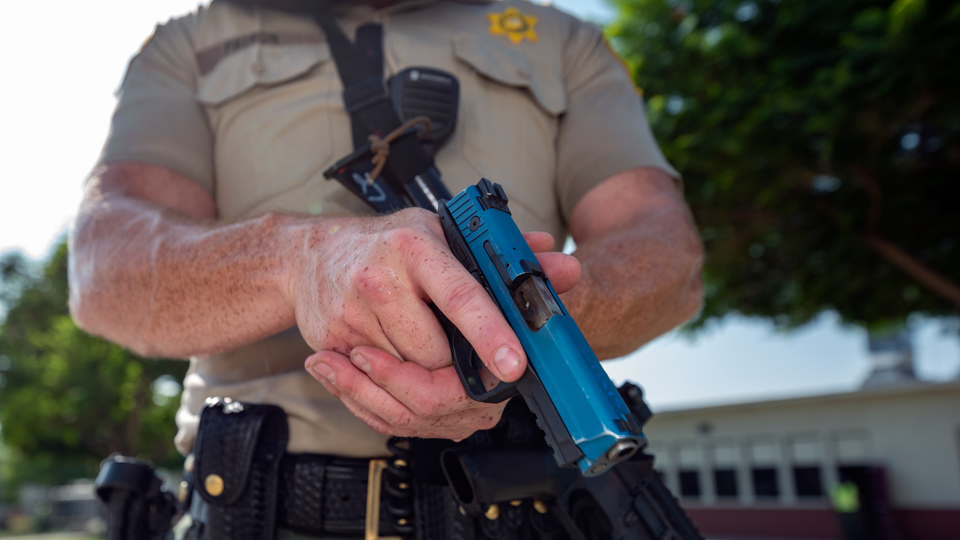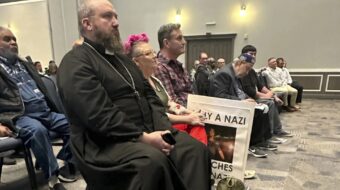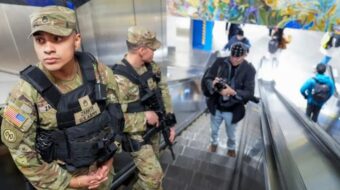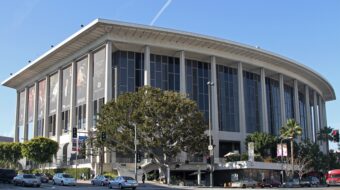
The hearing room was packed at the state capitol in Sacramento April 9 as the California Assembly Public Safety Committee heard nearly three hours of testimony for and against a bill that would greatly tighten the circumstances under which police could justify the use of deadly force.
Following the testimony, the committee voted 6-2 to approve the measure, Assembly Bill 392, the California Act to Save Lives. It now moves to the Assembly Rules Committee, and if passed there, will be considered on the Assembly floor.
AB 392 was introduced in February by Assembly members Shirley Weber, D-San Diego, and Kevin McCarty, D-Sacramento. It would change the current stipulation that police may use deadly force when it is “objectively reasonable,” by letting prosecutors consider whether officers had acted in a negligent way that exposed them to harm before a killing. Officers could use deadly force against someone fleeing arrest only if they thought the suspect had committed a violent felony and force was essential to prevent death or serious bodily injury, and prosecutors would be encouraged to consider whether police could have de-escalated a situation using verbal warnings or nonlethal force.
An earlier version of the measure stalled in committee last year after strong pressure from law enforcement agencies. The revised measure states more clearly that officers may invoke self-defense when danger is imminent and de-escalation tactics are unsuccessful.
Calling the power of police to use deadly force “perhaps the most significant responsibility we confer on any public official,” Weber told the hearing the measure is intended “to once again address the critical issues we have faced in this nation for 400 years, of how we treat others who don’t look like us.”
She pointed out that five of the 15 U.S. police departments with the highest per-capita rates of police killings are in California, most of the 172 Californians killed by police in 2017 were unarmed, and studies show communities of color suffer the most, with police killing young black men at more than 20 times the rate they kill young white men.
Weber said cities that have implemented stricter use-of-force policies have seen a decrease in officer-involved shootings without negative consequences for officer and public safety. She also noted that the current California use-of-force standard hasn’t been updated since 1872.
Among a long list of speakers backing the bill were many whose loved ones had been killed by police.
Ciara Hamilton’s 26-year-old cousin, Diante Yarber, was killed by police as he drove through a Walmart parking lot in Barstow, Calif. Hamilton told the hearing that officers fired 30 shots at Yarber, and tasered him, “leaving him to choke on his own blood. What does that say about our policing in California and in America? That black and brown people are not safe from state-sanctioned violence.”
Nine-year-old Josiah Guzman-Lopez, whose father was shot in the back by a San Jose State University police officer in 2014, urged the legislators to support AB 392 because “it just helps little kids’ lives.”
Law enforcement speakers mostly opposed the measure. Shane LaVigne of the California Statewide Law Enforcement Association told the hearing that officers must often make split-second decisions in uncertain and rapidly changing situations and asserted that AB 392 would require superhuman decision-making.
But others backed the bill. Jeff Noble, retired Deputy Chief of Police in Irvine, Calif., called AB 392 “a substantial improvement on existing law” because it “requires officers to use less lethal weapons and practice de-escalation in those situations where it’s safe to do so.”
And retired Los Angeles Police Department officer Cheryl Dorsey said outside of immediate defense of life or some other “exigent circumstance,” de-escalation should be the rule. She also questioned the idea that AB 392 would discourage potential recruits, saying that “not everyone who wants to be the police should be the police.”
AB 392 is strongly supported by the American Civil Liberties Union of California, and by the broad Building the California Dream Alliance coalition of over 50 labor, environmental, health and social justice organizations of which it is a part.
When the bill was introduced in February, Lizzie Buchen, the ACLU of Northern California’s Legislative Advocate, called current California laws permitting police to kill even when alternatives are available and safe, “unacceptable.”
Noting that over two-thirds of the 172 people police killed in 2017 – and three quarters of those later found to be unarmed – were people of color, Buchen called AB 392 “a common-sense bill” modeled after best practices already in place in some U.S. police departments.
Law enforcement organizations have put forward a bill of their own—Senate Bill 230, introduced by state Sen. Anna Caballero, D-Salinas, which emphasizes training and policy, including de-escalation. The Senate Committee on Public Safety will hold a hearing on SB 230 later this month.












Comments